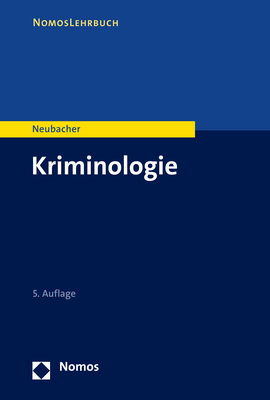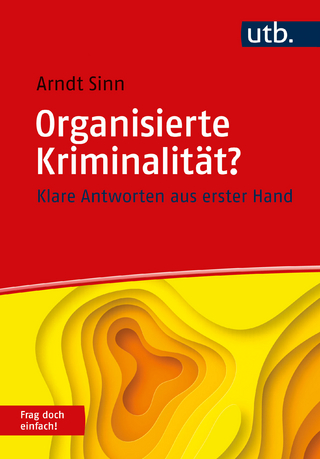
Crime and Everyday Life
SAGE Publications Inc (Verlag)
978-1-5063-9478-7 (ISBN)
Crime and Everyday Life offers a bold approach to crime theory and crime reduction. Using a clear, engaging, and streamlined writing style, the Sixth Edition illuminates the causes of criminal behavior, showing how crime can affect everyone in both small and large ways. Renowned authors Marcus Felson and Mary Eckert then offer realistic ways to reduce or eliminate crime and criminal behavior in specific settings by removing the opportunity to complete the act. Most importantly, this book teaches students how to think about crime, and then do something about it.
Marcus Felson is the originator of the routine activity approach and of Crime and Everyday Life. He has also authored Crime and Nature, and serves as professor at Texas State University in San Marcos, Texas. He has a B.A. from University of Chicago, an M.A. and Ph.D. from the University of Michigan, and has received the 2014 Honoris Causa from the Universidad Miguel Hernandez in Spain. Professor Felson has been given the Ronald Clarke Award by the Environmental Criminology and Crime Analysis group, and the Paul Tappan Award of the Western Society of Criminology. He has been a guest lecturer in Argentina, Australia, Belgium, Brazil, Canada, Chile, China, Denmark, Ecuador, El Salvador, England, Estonia, Finland, France, Germany, Hong Kong, Hungary, Italy, Japan, Mexico, the Netherlands, New Zealand, Norway, Poland, Scotland, Spain, South Africa, Sweden, and Switzerland. He has applied routine activity thinking to many topics, including theft, violence, child molestation, white-collar crime, and corruption. Mary A. Eckert has an M.A. and Ph.D. in sociology from New York University. Her B.A. is from the College of New Rochelle. Dr. Eckert has devoted an active career to applied research in criminal justice and program evaluation. She served as research director of the New York City Criminal Justice Agency, Inc., where she authored many research reports and guided that agency’s diverse research agenda, including work on pretrial risk assessment, court-case processing, and evaluating alternative-to-incarceration programs. She also worked for the New Jersey Office of the Attorney General, with a special focus on statistical evaluation of vehicle stops to assist the New Jersey State Police in reducing the potential for racial profiling. Her work has been recognized by the New York Association of Pretrial Service Agencies and the State of New Jersey. She has been an adjunct professor at New York University, Montclair State University, and Texas State University.
Preface to the Sixth Edition
Acknowledgments
About the Authors
1. Eight Fallacies About Crime
The Dramatic Fallacy
The Cops-and-Courts Fallacy
The Not-Me Fallacy
The Innocent-Youth Fallacy
The Ingenuity Fallacy
The Formally Organized Crime Fallacy
The Big Gang Fallacy
The Agenda Fallacy
Conclusion
Main Points
Projects and Challenges
Endnotes
2. The Chemistry for Crime
Risky Settings
Stages of a Criminal Act
First Three Elements of a Criminal Act
Eck’s Crime Triangle
Predatory Crimes
Calming the Waters and Looking After Places
Hot Products
The General Chemistry of Crime
Conclusion
Main Points
Projects and Challenges
Endnotes
3. Offenders Make Decisions
The Decision to Commit a Crime
How Violence Erupts
Conclusion
Main Points
Projects and Challenges
Endnotes
4. Bringing Crime to You
Stages in the History of Everyday Life
Life and Crime in the Convergent City
Crime and the Divergent Metropolis
Crime in the Cyber Age
Conclusion
Main Points
Projects and Challenges
Endnotes
5. Teenage Crime
Muscles, Babies, and the Historical Role for Youths
Modern Role for Youths
Hour-for-Hour Risks
Time With Peers
Parental Efforts to Delay Peer Dominance
Conclusion
Main Points
Projects and Challenges
Endnotes
6. Big Gang Theory
Defining Gang Crimes
Big Gang Theory
Confusion About Gangs
The Reason for a Gang
Conclusion
Main Points
Projects and Challenges
Endnotes
7. How Crime Multiplies
Crime Multipliers
Moving Stolen Goods
Conclusion
Main Points
Projects and Challenges
Endnotes
8. Situational Crime Prevention
Four Natural Experiments
Crime Analysis Today
Diverse Applications of Situational Crime Prevention
Conclusion
Main Points
Projects and Challenges
Endnotes
9. Local Design Against Crime
Securing Communities
The Offender–Target Convergence Process
Seven Studies in Reducing Local Crime
Conclusion
Main Points
Projects and Challenges
Endnotes
10. The Age of Exposure
Organizational Exposure
Crimes of Specialized Access
Electronic Exposures
Technological Leaps and Cultural Lags
Conclusion
Endnotes
Index
| Erscheinungsdatum | 29.10.2018 |
|---|---|
| Verlagsort | Thousand Oaks |
| Sprache | englisch |
| Maße | 152 x 228 mm |
| Gewicht | 260 g |
| Themenwelt | Recht / Steuern ► Strafrecht ► Kriminologie |
| Sozialwissenschaften ► Soziologie ► Allgemeine Soziologie | |
| ISBN-10 | 1-5063-9478-7 / 1506394787 |
| ISBN-13 | 978-1-5063-9478-7 / 9781506394787 |
| Zustand | Neuware |
| Haben Sie eine Frage zum Produkt? |
aus dem Bereich


